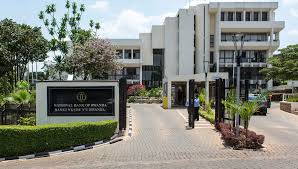The National Bank of Rwanda has raised its key repo rate by 25 basis points to 6.75 percent as the country battles rising inflation that is putting pressure on the economy.
Governor Soraya Hakuziyaremye announced the decision on Thursday after the bank’s monetary policy committee meeting in Kigali. She explained that the move was necessary to safeguard economic stability as inflation has been climbing above earlier projections.
The rate hike comes after the central bank had kept the benchmark rate unchanged at 6.5 percent for three consecutive meetings. Officials say the decision reflects growing risks in the economic outlook.
Latest figures show that Rwanda’s annual inflation rose to 7.3 percent in July 2025, compared to 7.0 percent in June. The central bank maintains an inflation target range of between 2 and 8 percent but aims to bring it closer to a medium-term goal of 5 percent.
Speaking at a press conference, Governor Hakuziyaremye said: “We see that headline inflation is projected to average 7.1 percent for this year, before reducing back to 5.6 percent in 2026.”
She noted that risks remain due to adverse weather conditions, which could affect agricultural production, as well as external challenges such as geopolitical tensions and global trade uncertainties. Rwanda depends heavily on agriculture, and poor weather conditions often affect food supply, which in turn drives up consumer prices.
The governor also pointed out that tourism and manufacturing remain key contributors to Rwanda’s growth, but rising inflation could affect consumer demand and investor confidence.
On the broader economy, the Ministry of Finance has projected that Rwanda’s GDP will expand by 7.1 percent in 2025, a slowdown compared to the 8.9 percent growth recorded in 2024. Economists believe tighter monetary policy could help bring inflation under control but may also reduce credit growth in sectors such as housing, trade, and manufacturing.
The decision by the National Bank of Rwanda aligns with moves by several other African central banks, which have also raised interest rates in response to inflationary pressures. Across the continent, central banks face the difficult task of balancing growth ambitions with the need to control rising prices caused by supply disruptions, currency depreciation, and higher import costs.
For Rwanda, the adjustment in interest rates is expected to have both immediate and long-term effects. Borrowing costs for businesses and individuals may rise, which could slow down investment in the short term. However, if inflation is controlled, it could help stabilize consumer prices, restore purchasing power, and strengthen investor confidence in the long run.
Financial analysts say the central bank’s action sends a strong signal of commitment to price stability. By tightening monetary policy slightly, the bank hopes to reduce excess liquidity in the economy while ensuring inflation remains within the target range.
Despite the challenges, Rwanda continues to position itself as one of Africa’s fastest-growing economies. The government has invested heavily in infrastructure, technology, and tourism, while also working to modernize agriculture to reduce vulnerability to climate shocks.
Governor Hakuziyaremye reassured investors and citizens that the central bank will continue to monitor developments and adjust policies when necessary. She stressed that safeguarding economic stability is the bank’s top priority as Rwanda prepares for medium-term growth.
As the country works toward its development goals under Vision 2050, policymakers face the dual challenge of maintaining growth momentum while keeping inflation under control. The latest move by the central bank shows how seriously authorities are treating the risks posed by rising consumer prices.
